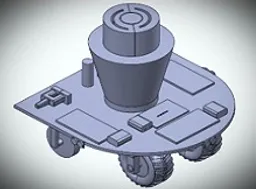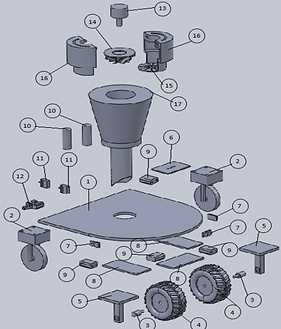The RoomBot Project
This was a group project completed in Engineering Design II (MECH202), with the goal of designing and producing an autonomous vacuum cleaner!

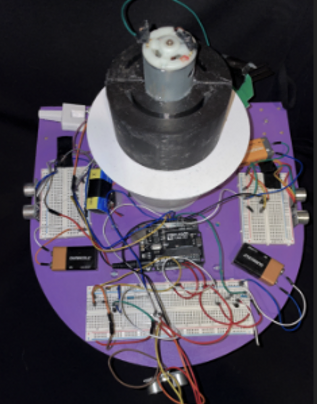
About the Assignment
This was a semester long project done in the Fall of 2022. Students were placed in groups of 5 and given the assignment. There were many weekly assignments to track progress, and monthly meetings with TA's to prove there was progress happening.
The Professor for this course was Dr. Bonnie Roberts, who was in charge of both MECH201 which teaches SolidWorks, and MECH202 which was this course.
The Goal
At the end of the semester, all groups met at a designated time and place for the competition. The competition was a double-elimination styled bracket. Two groups would go head to head in the competition fixture with a two minute time limit. The only goal was to vacuum up the most debris. There were marbles, foam marbles, screws, and lots of sand to pick up.
At the end of each match, both groups would weigh their debris in front of the professor, and whoever had a higher weight would move on in the bracket, and the loser would go to the loser bracket or be sent home.
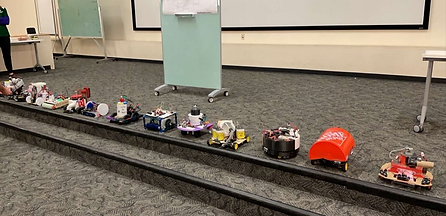
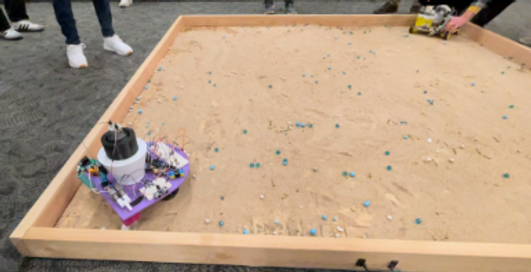
My Experience and Process Summary

In my specific group of 5, only two of the team members really put effort into the project. The final product was not what we wanted, but it worked enough that we won 2 matches before getting eliminated.
There were many methods used for this product.
- We started initially by focusing on the wheels, because we wanted to make sure we had enough power and torque no matter what.
- We ended up using two motors, making this a FWD vehicle.
- The next part was designing the actual vacuum. I did a lot of modeling and 3D printing of vacuum pieces in order to ensure functionality.
- The 3D modeling was done in SolidWorks©. The printing was done in CSU's I2P lab, with PLA filament.
- Once that design was done, we had to cut out the base, which I painted purple for visual perfection.
- Last was the actual coding. We used the Arduino microcontroller and 3 ultrasonic sensors so the RoomBot did not interfere with the other product or the walls inside the fixture.
- The hardest part was actually powering the vacuum. It was very difficult to find enough power for both wheel motors and the vacuum. In the end, every motor had different batteries to power them, and the vacuum had a special rechargeable battery pack taken directly out of a Walmart© hand vacuum.
The Result
Although we did not win the entire competition, this was a successful project. The RoomBot worked, despite its looks. If you would like to read more about the project you can download the final report, but just be aware it is 90 pages.
